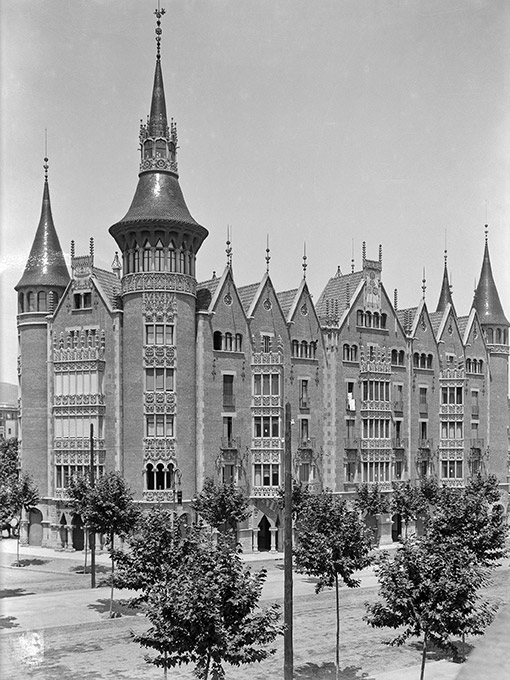Find out all about Casa Amatller
Three facets, one figure
An art historian and academic of Catalan culture, Josep Puig i Cadafalch studied the period of the Middle Ages in Catalonia in depth, with a great interest in Catalan Romanesque. This inclination led him to visit certain points of the Catalan geography, which would allow the discovery in 1907 of the extraordinary Romanesque ensembles of the Vall del Boí, whose valley is now considered the cradle of European Romanesque art. It should be noted that many of the mural paintings, carvings and furniture are conserved in different Catalan museums, especially in the Museo Nacional de Arte de Catalunya (MNAC). However, many of the churches have important fragments of original Romanesque murals and sculptures, as well as reproductions of those preserved in museums.
Josep Puig i Cadafalch was one of the first historians to highlight the importance of Romanesque architecture, painting and sculpture in the Calalonian Pyrenees. In 1908 he was in charge of carrying out the first scientific archaeological excavation in Empúries. The modern and successful studies on Catalan art allowed Puig i Cadafalch to travel as an expert on the subject to several European universities.
A faithful follower of the Renaixença, a cultural movement that was committed to recognising and valuing Catalan culture, his political activity was closely linked to Catalan nationalism. Very active in several Catalan nationalist political parties, he held several public posts: councillor in Barcelona, deputy in Cortes in Madrid and became President of the “Mancomunitat de Catalunya” after the death of its first president, Prat de la Riba. As president of the Mancomunitat, he drew up an ambitious teaching and cultural plan and promoted the creation of new roads at the same time as boosting the development of agriculture.
As an architect, Puig i Cadafalch applied his studies of Catalan art and medieval architecture to the design of his buildings. His most recognisable works are part of the historicist trend within the architecture of Catalan modernism, in which the construction methods of industrialisation were combined with the decorative tendencies of the time.
Puig i Cadafalch began his career as a municipal architect in his native Mataró, where he also built his first large houses, such as the Parera or Coll i Regàs houses. In Barcelona he was also in charge of urban reforms, such as the opening of the Via Laietana or the remodelling of Plaza Catalunya. The building of Casa Amatller between 1898 and 1900 in the heart of Passeig de Gràcia gave him the opportunity to work in more houses in the city.
His work is divided into three stages:
Modernist period (1895-1905)
The architecture of this period is linked to his feeling of belonging to the earth, with the Catalan Pairal house as a model associated with feudal and aristocratic prestige. It should be noted that this was an initial period in which the influences of his masters or the European architecture of the time played a major role. Thus we can see the historicist influence of Domènech i Montaner, whose disciple he had been, on the use of neo-Gothic or neo-Renaissance windows, such as in the Palau Macaya, or a strong evocation of northern European architecture due to Wagner’s taste for the period, as can be seen in the Casa Amatller or the Casa de Les Punxes.
In terms of decoration, we can highlight the use of decorative and ornamental elements, charged with a strong symbolism and artistic beauty.
Rationalist period
During this period, Puig i Cadafalch adapted to the rational idealism of the high bourgeoisie, creating more rationalist works without as much monumentality and ornamentation. It can be said that Puig i Cadafalch was inspired by the line marked by the Viennese Secession which was a European movement within the so-called Art Nouveau and was created in 1897 by a group of 19 Viennese artists. This current aimed at artistic renewal, recovering some of the styles of the past as a means of rejecting the industrial production of the time and the onslaughts of industrial production, which were structurally and aesthetically stripping the reality of art and society of the period. As a result of this period, we can mention the building of Casa Trinxet and Casa Muntadas.
Monumentalist period
The third period is marked by his work at the1929 Universal Exhibition, where he was hired as the first architect to be commissioned with the site.
The architecture of this period is characterised by the mixture of neoclassical airs with elements of national geography, along with the projection of houses under the influence of American architecture, especially the most classicist architecture of Louis Henry Sullivan, as occurs in the Casa Pich.







